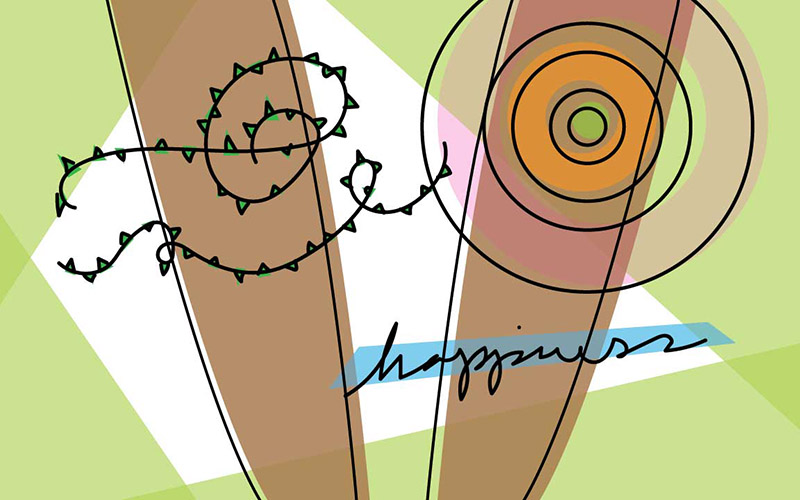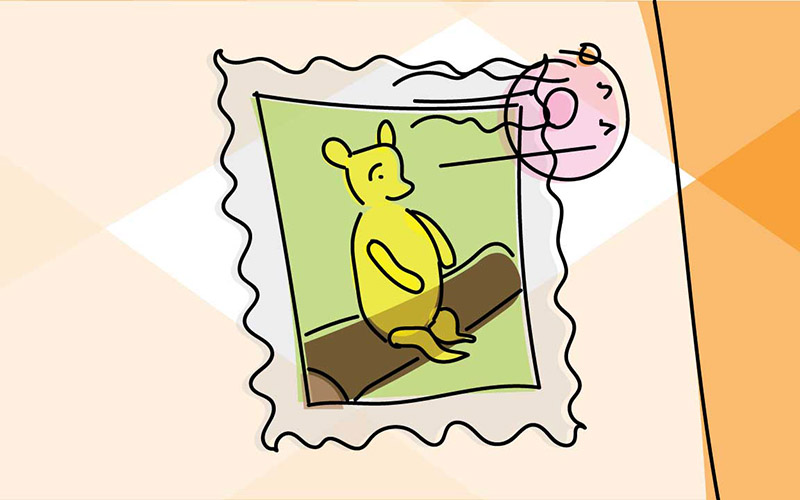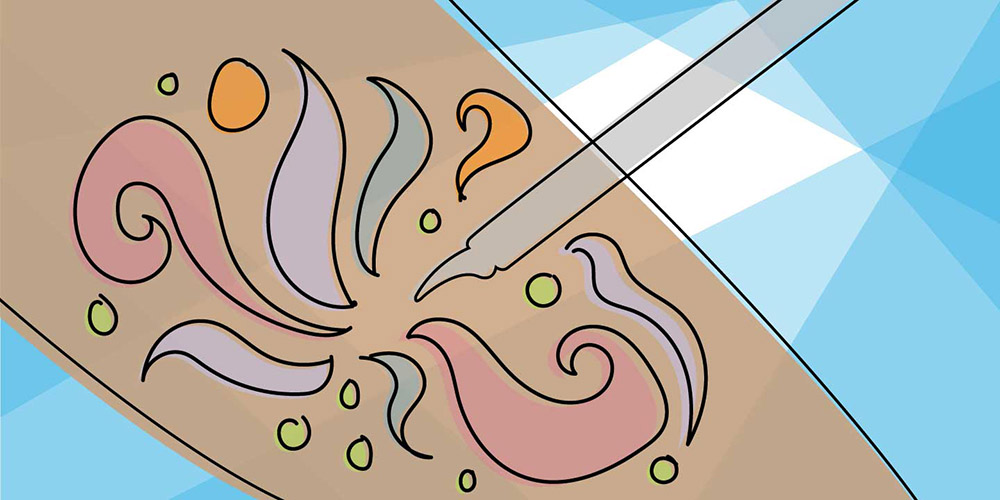When I saw that the Tattoo Convention was underway at the Philadelphia Convention Center recently, I decided to take a look. I wanted diversion, and I’m a sucker for conventions. Having attended The Board Game Convention, The Flower Show, and The Home Show, why not the Tattoo Show? All these events had been crowded and lively, but the Tattoo Convention was the most colorful: decorated human flesh being more eye-catching than Pandemic, peonies, and patio furniture.
I was an interloper at the show since I came of age before the trend took hold and did not have a tattoo. My husband, a physician, says that when he was in medical school 40 years ago, he was taught that anyone with more than two tattoos was a probable sociopath.
Like much expert opinion, his professors were behind the curve. Even by the 1970s, tattoos had begun to emerge from their association with society’s underbelly. They were already being adopted by more reputable outsiders — hippies and artists. This was also the period when graffiti tags and street fashion (torn jeans, safety pin earrings) started to gain a following.
Tattoos did not penetrate my middle-class consciousness, however, until early in this century, when a few of my children’s friends appeared with small tattoos on their collarbones and ankles, accessories to the then-modest piercings of upper ears and bellybuttons. These were the first discreet emblems of rebellion — or self-expression — depending on whether you were parent or child. A few years later, I began to see students in my classroom with eyebrow, lip, tongue, and nose piercings and with more conspicuously inked bodies: thorns encircling their upper arms, words like peace and serenity on their wrists, followed soon after by larger tattoos, then “sleeves” — whole arm patterning, often in color: swirling abstract designs and, more recently, detailed figures: vampires, mythological creatures, Buddhist texts.

The people at the Tattoo Convention were not exactly clean-cut, though they weren’t altogether seedy either. A contingent might have ridden motorcycles and menaced small towns, but others could have been working on their PhDs in philosophy. There were also families and babies in carry-alls.
The spaces that the artists had rented all had surgical-style beds for tattooing on site. Moving through the show one saw hundreds of supine clients, shirts pulled up so that front or back could be worked on (pasties, for modesty, supplied to the women), pants pulled down to expose the upper thigh, a large canvas for inked expression. There was something endearing, even poignant, about seeing the more hardened characters bearing their imperfect bodies while the artists labored over them in rapt concentration. I felt moved at the trust of one human being in the skill of another to imprint something that would endure on the body forever.
That is the mystique of the tattoo — its permanence. To those of us who have lived long enough to change our minds about most things, the prospect of imprinting our bodies in perpetuity seems foolhardy — but I suppose that’s precisely what makes getting a tattoo audacious and glamourous. Tattoos can, presumably, be removed — and there were experts at the show who could do that — but they invariably leave behind a shadow of what was (take a look at Angelina Jolie’s arm with its tracery of her past devotion to Billie Bob Thornton superimposed with tattoos relating to her children’s birth — subject-matter less likely to be regretted). The colorful scene from Winnie the Pooh on a taut-skinned 20-year old can look less whimsically charming on the wrinkled thigh of a 70-year old. Still, though most tattoos are acquired by millennials (a Harris Poll reports that 47% of that population has one), many who were bearing their breasts and buttocks at the show were middle-aged or older.
No one receiving a tattoo appeared to be in pain, suggesting that methods have improved to mitigate discomfort. But then, regardless of age, most of these people were veteran tattoo enthusiasts, probably used to the needles. I’ve been told that the pain can actually add to the addictive appeal. As someone who has shopaholic tendencies, I understand. When I dream about a new handbag or pair of shoes, the damage it will do my bank account is, in some sense, an incitement. There has to be a cost to have a pay-off. In both cases, moreover, there is the wish to elaborate oneself through adornment, moving but never arriving at self-completion. I heard one artist at the show lecturing a young man about how he could supplement the tattoo of a ship on a stormy sea inked on his upper arm. “You can add a face to your forearm, possibly of a mythological character, that looks toward the ship or across to another character on your chest. Maybe give him a Trident and make him, say, Poseidon battling Zeus. You can research mythology and add more characters later.” The potential client seemed receptive, poised to become an expert in mythology and make his body into a classical text.

Tattoos reflect our current urge to turn private into the public. The late 19th century gave birth to psychoanalysis, a science that attempted to bring hidden desires to consciousness. But these revelations were confined to the intimate space occupied by patient and therapist. Tattoos, when they are visible, make the body a billboard for its possessors’ dreams and fantasies.
In many ways, a tattoo is a paradox. If it is fashion, it is fashion that can’t be changed, only supplemented and elaborated on. It resembles plastic surgery but with the difference that it makes the body deviate from a norm rather than come closer to one; e.g. that perfect nose or jawline. Tattoos are not concerned with perfection but with idiosyncrasy and individuality. This, despite the fact that, as with anything that gains popularity, there is an element of conformity that sets in at a certain point. I have yet to see an analysis of tattoo trends, but I expect that those in the know can date a tattoo at a glance: small, scripted lettering around ankle and wrist were the rage a few years ago but may have already gone out of style and been replaced by colorful Korean-inspired tattoos.
Tattoos may seem restrictive to people who focus on their immutability. But I understand how they can also be liberating in allowing their recipients to override or supplement the immutable characteristics they were born with. Tattoos vie with nature in making an imprint that is whimsical, commemorative, allusive, or just plain cryptic as indelible as a biological given. Choice is the consummate postmodern term, and tattoos are the visible expression of personal choice. It means that you— not mom, dad, or Mother Nature — are the boss of the flesh you will carry to the grave.
The common admonition of people my age to younger people getting tattoos is that they won’t look as good in old age. But is there anything about our bodies that will look as good in old age? As more and more people get tattoos, the sagging of these images will appear as normal as sagging breasts and bellies. If everyone has a faded Winnie the Pooh on their thigh, it won’t seem particularly odd to have one. Or, to abstract further in a positive direction, when everyone has a mark of regret, regret may become less potent. One great thing that tattoos do, even as they draw attention to the body, is to help us see it as an envelope that we can write on, put in the mail of our lives, but inevitably have to throw away.

The Sunday after the Tattoo Convention, I walked a few blocks west to a hotel where the Philly Pen Show was underway. It seemed a fortuitous correspondence: the inking by antique fountain pens on paper following the inking by needles on human flesh. The attendees at the Pen Show were more sedate than at the tattoo show, but there was overlap— a young man, for example, with an arm densely calligraphed with Chinese characters contemplating Mont Blanc nibs. In fact, the two enthusiasms are not really so different. Yes, one is funky and modish; the other, refined and old-school. But both involve imprinting surfaces and incite their followers to collect more of them in fetishistic pursuit of something ineffable. Ironically, the fountain pen produces the longer-lasting imprint — inked paper able to survive long after the inked body has disintegrated. As Shakespeare assured his beloved: “So long as men can breathe or eyes can see, /So long lives this, and this gives life to thee.”
Perhaps with such literary immortality in mind, I purchased a Junior Sheaffer Fountain Pen at the Pen Show. It cost me only 9 dollars and evoked 5th grade when my best friend and I, both having acquired these pens along with peacock blue cartridges, sent notes back and forth across the aisle in what we felt was the height of sophisticated communication. It was nice to relive that memory, but the Junior Shaeffer leaked as soon as I tried to use it. My fingers ended up inked, though not permanently. •




